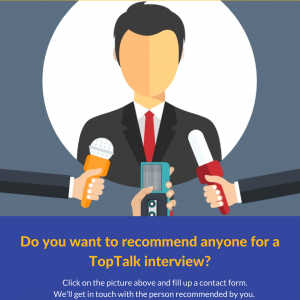 Aaron Tucker is the Managing Director of motivationWorks by Immersyve Inc. Aaron has worked at both boutique and big four consulting firms in senior roles working mainly in HR Transformation and HCM integrations. Before that, he spent a career in the special operations community as a Navy SEAL. He is a recognized expert in leadership and the employee experience as well as a sought-after keynote speaker on a variety of topics.
Aaron Tucker is the Managing Director of motivationWorks by Immersyve Inc. Aaron has worked at both boutique and big four consulting firms in senior roles working mainly in HR Transformation and HCM integrations. Before that, he spent a career in the special operations community as a Navy SEAL. He is a recognized expert in leadership and the employee experience as well as a sought-after keynote speaker on a variety of topics.
What does employee engagement mean to you?
Employee Engagement at least to me means having a meaningful experience at work. Ultimately, we all want to be happy and endorse our behaviors, especially the ones we have a minimal choice over. We can be engaged with and accomplish things at work that might not be the most interesting if we can find personal value in those tasks.
How to measure employee engagement?
There are tons of metrics that measure engagement, but the key is understanding their limitations. Most of what we see is ultimately low-value measures because they are really only lagging indicators of engagement. They don’t tell us what caused the problems, or what to do about it. To truly measure employee engagement an organization must use a high-value and predictive measure.
Today we can measure engagement through the lens of motivational quality, which emerged from 40 years of research by leading behavioral and motivational psychologists. The framework created allows for specific indicators and drivers to be measured that are actionable within an organization.
What are the common causes of employee disengagement?
The most common causes of employee disengagement come down to low fulfillment and a lack of support from their team members and leaders. This causes low engagement, and really hinders employees’ ability to endorse what they are doing at work. Then when things get challenging or problems arise, employees cut corners, disengage, or burn out.
What are the drivers of employee engagement in today’s fast-moving world?
There are three main drivers or core precepts, autonomy, relatedness, and mastery.
- Autonomy – is the need we all innately have to feel that we are the author of our lives. That we endorse the path we are on as we move through our day, tackling tasks and striving towards goals that we believe in
- Relatedness – our need to build relationships in which we care for others, and are cared for in return. Relatedness needs are met when we feel this caring and support and are thwarted when we feel isolated or that we “don’t matter” to those around us.
- Mastery – the need to feel successful in what we are doing day to day and moment to moment in the tasks we tackle. Through this comes personal growth as well. Our ability to learn and integrate new skills and grow
What makes an effective employee engagement journey?
The short answer is basic psychological needs satisfaction. We all know that we need to satisfy our hunger to survive, but we also need to have autonomy, relatedness, and mastery to thrive at work and feel engaged. Teaching and empowering leaders in these needs and mentoring them in how to use them has proven to increase performance, enjoyment, and learning.
How do you engage senior leaders in employee engagement?
At a senior leadership level, there must be an understanding of the needs and their role in fulfilling those needs. As a senior leader, their job is to create a supportive environment for their employees and to ensure that their managers and teams have all the tools they need. Environments that support their employees in the right way will naturally foster employee engagement.

2 thoughts on “Aaron Tucker, Managing Director, motivationWorks”